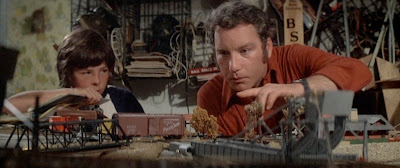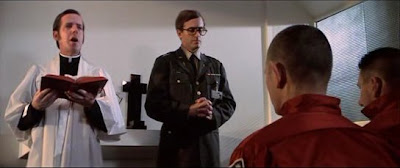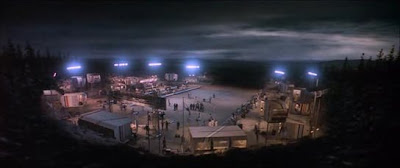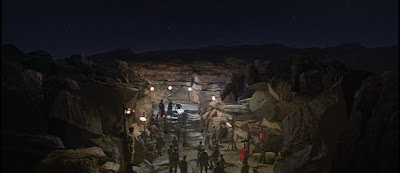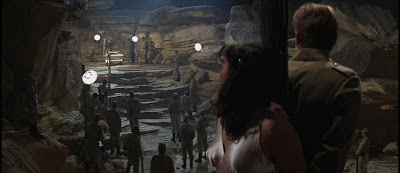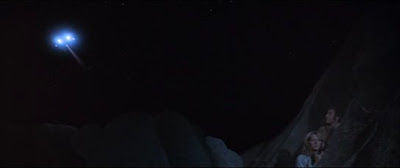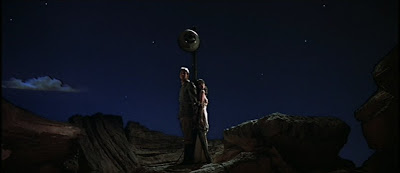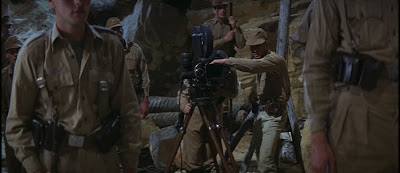
To get ready for the rumoured alien visitation in Indiana Jones and the Kingdom of the Crystal Skull, I recently spent a few nights watching all three versions of Steven Spielberg’s Close Encounters of the Third Kind (1977) — a film that I had not seen since high school — and I found it interesting on multiple levels.
For one thing, there are only two feature films where Spielberg has had sole credit for the final screenplay — this film and A.I. Artificial Intelligence (2001) — and both of these films make significant use of characters, themes or music from Pinocchio, either the original book written by Carlo Collodi in 1883 or the animated film released by Walt Disney in 1940. The two Spielberg films emphasize different aspects of that story, though; Close Encounters is all about “wishing upon a star”, whereas A.I. is all about trying to become a “real boy”. And, interestingly, Close Encounters is all about a child-like man who abandons his family to commune with the aliens, whereas A.I. is all about a child-like robot who yearns to be with his human family, or at least his mother, rather than to commune with his fellow robots.
For another, there is the film’s attitude towards family — which varies depending on which version of the film you’re watching. As Glenn Kenny has observed, the original theatrical version of the film — which had never been released on home video prior to the 30th-anniversary edition that came out several months ago — introduces Roy Neary (Richard Dreyfuss) as a sort of lovable loser who has never properly grown up, and who drives his family away with his obsessive behaviour. But the “special edition” released in 1980 cuts out some of Roy’s most pathetic behaviour, both before and after he first encounters the aliens, and it adds new scenes which depict his wife and kids nagging at him before he encounters the aliens and yelling their hatred of him after he encounters the aliens. As Kenny writes, “this new introduction posits a family so awful one would be a fool not to leave it. Here, Neary isn’t the schmuck, and the family IS the monster. Ruthless, like I said. But effective.” For what it’s worth, the “director’s cut” released in 1998 balances things out a little more; it stays true to the “special edition” for the most part, but it reinstates some — not all, but some — of the footage that was unique to the original version.
Also, speaking as one who first saw this movie in his teens and is now re-visiting it in his late 30s, it is striking to me that Spielberg and Dreyfuss were both in their late 20s when they made this film — though Roy, the Dreyfuss character, gives his date of birth as December 4, 1944, which would make him not quite 33 when the film came out in November 1977. (Spielberg actually turned 30 late in the production.) Already, at that age, Dreyfuss was playing a family man with a house and a wife and three kids … and he drops it all to follow the aliens. Spielberg says he wouldn’t tell the story this way nowadays; he says the character’s readiness to abandon his family for a ride into space reflects the “youth” that he, Spielberg, was feeling at that time. (Spielberg’s first child would not be born for another eight years; he now has several.)
Interestingly, though, Roy is accompanied to Devil’s Tower by a woman who is desperate to get her son back from the aliens. Roy’s wife puts family first, and ends up looking kinda bad; but Roy’s friend puts family first, and ends up looking pretty good. The main difference between the two seems to be that one (the married wife) is holding Roy back, while the other (the single mom) is not.
While watching this film, I actually found myself beginning to imagine E.T. the Extra-Terrestrial (1982) — which came out five years later — as a sort of sequel in which Roy’s wife and their three kids move to a new home and find themselves deep in denial, persuading themselves that Roy has gone to Mexico with “Sally” instead of into space with the aliens. Spielberg has always said that E.T. was inspired by his parents’ divorce, and I wonder if the slightly-younger Spielberg ever tried to see the marital split in Close Encounters from the children’s point of view, rather than Roy’s. (In that regard, one of the commenters at Kenny’s blog has an interesting theory: “I’ve always seen Roy’s story as an abandoned child’s idealized version of ‘where daddy went,’ but one that still carries a strong undertone of ‘it was your fault’ guilt.”)
Like I say, I hadn’t seen the film in over 20 years, but I have always vaguely remembered the scene where Roy’s wife complains that the kids shouldn’t stay up late to watch the rest of The Ten Commandments (1956) because the movie is way too long. (Hey, I remember staying up late to watch that film on TV when I was a kid back then! With commercials and everything, it really did take up the whole evening!) Spielberg would go on to reference the story of Moses elsewhere in his career — he featured the Ark of the Covenant in Raiders of the Lost Ark (1981), and it was his idea to make the first DreamWorks cartoon The Prince of Egypt (1998) — and it’s not too hard to draw parallels between the alien encounter at Devil’s Tower and the divine encounters at Mount Sinai.
In fact, the more I think about it, the more I am reminded of how the barriers placed by the U.S. government around Devil’s Tower — and the way the local livestock are knocked out with nerve gas — are vaguely reminiscent of the instructions God gave Moses specifying that no animals and no other persons should come up the mountain, on pain of death. So it is striking that Spielberg has Roy, an “everyman”, punch through the barrier and make contact with the aliens against the wishes of the official, institutional powers that be. Of course, the “everyman” does this because the aliens have summoned him; so if one wanted to pursue the Devil’s Tower – Mount Sinai connection, one could say that one of the themes of this film is that “everymen” have been called to commune with God directly, and that institutional religions get in the way with all their don’t-cross-this-line rules. (Christianity mixes things up a bit by ripping the veil that separates God from man, but improper contact with the divine can still be lethal.)
In any case, I had remembered most of that stuff, either from my one viewing of the film way back when or from reading about it in the interim, but I had completely forgotten about the religious service that is held for the government or military agents in the red suits just before they approach the aliens, asking to be taken as “pilgrims” into outer space. And this scene is prefigured, to a certain degree, by an earlier scene in which one of the military bigwigs says he wants to come up with a plan that will allow the army to evacuate every “Christian soul” away from the vicinity of Devil’s Tower. A throwaway line of dialogue, perhaps, but when that religious service came up near the end, I began to wonder. Spielberg himself is not Christian, but his inclusion of these details says something about the way he saw his country, and about the way he thought it saw itself, at that time. And hey, incidentally, the first time we see those people in red suits, they are walking through an air hangar partly filled with crates. Crates.
And speaking of possible Raiders of the Lost Ark allusions, I was also struck by how the American government sets up a bank of movie cameras to film the arrival of the UFOs at Devil’s Tower … late at night, surrounded by craggy rocks … just as the Nazis set up at least one camera to film the opening of the Ark of the Covenant at the end of Raiders … late at night, surrounded by craggy rocks. (See the screen captures below: Close Encounters on the left, Raiders on the right.) And of course, Raiders, too, plays on the idea that the government — even the American government — is paranoid and secretive and doesn’t want people to know when it has come into contact with awesome supernatural forces.
In one of the bonus features, the point is made that Close Encounters was the first major pop-culture expression of the idea that we had nothing to fear from aliens — and I found myself wondering about 2001: A Space Odyssey (1968), which came out nine years earlier. Kubrick’s movie is rather ambivalent on the question, I suppose: the aliens do encourage the advancement of the species, but at the expense of individual persons (a similar theme comes up in Arthur C. Clarke‘s Childhood’s End); the first sign of alien influence on human development is the rise of a new kind of warfare; and if you follow Clarke’s version of the conclusion of that film, you learn that the Star Child is capable of saving the Earth from nuclear self-destruction, which raises interesting questions about the other ways in which he or the aliens guiding him might try to “control” us, so to speak. And, hmmm, what about The Day the Earth Stood Still way, way back in 1951? Yes, there is a threat of doom there, but only because we already pose a threat to each other and to the various worlds beyond our own; apart from that, the aliens are our friends. Sort of. Hmmm.
Anyway. Watching Close Encounters again after all this time, and seeing how it connects to some of Spielberg’s other films, has been really interesting and informative in its own right. If the rumours prove false and there really isn’t anything all that extra-terrestrial in Crystal Skull, I won’t mind; my time has not been wasted.


